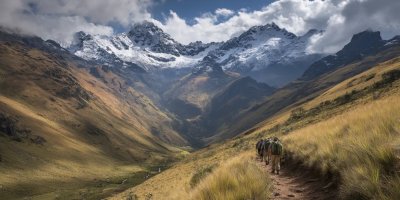When planning a trip to Peru, understanding the weather is crucial, especially when visiting iconic sites like Machu Picchu. The country features diverse climates due to its varied geography, which ranges from coastal regions to high-altitude mountains.
The best time to visit Machu Picchu is during the dry season, which runs from May to September. This period offers sunny days and cooler nights, perfect for exploring the ancient ruins. However, it can also be the busiest time, so plan your visit early to avoid crowds.
In contrast, the rainy season, from November to March, brings heavy showers, particularly in January and February. While the landscape is lush and green, many hiking trails can be muddy, and some may even close due to weather conditions. If you’re an adventurous traveler, visiting during this time can provide a more tranquil experience.
The temperatures can vary significantly depending on the time of day. In Machu Picchu, daytime temperatures can reach around 20-25°C (68-77°F), while nights can drop to 5-10°C (41-50°F). Always pack layers to accommodate these changes.
In Cusco, the weather is quite similar but can be cooler due to its higher elevation. Expect chilly evenings, so a warm jacket is a good idea. It’s also advisable to carry a rain poncho if you visit during the wet months.
The Sacred Valley enjoys a milder climate, making it a pleasant stop year-round. Be sure to stay hydrated, as high-altitude locations can lead to altitude sickness.
Regardless of when you visit, always check the local weather forecast before heading out, and consider using a weather app for real-time updates. This way, you can ensure that your itinerary remains flexible and enjoyable.
Lastly, engaging with locals can enrich your understanding of how weather patterns affect their daily lives and traditional practices, from agriculture to festivals.






